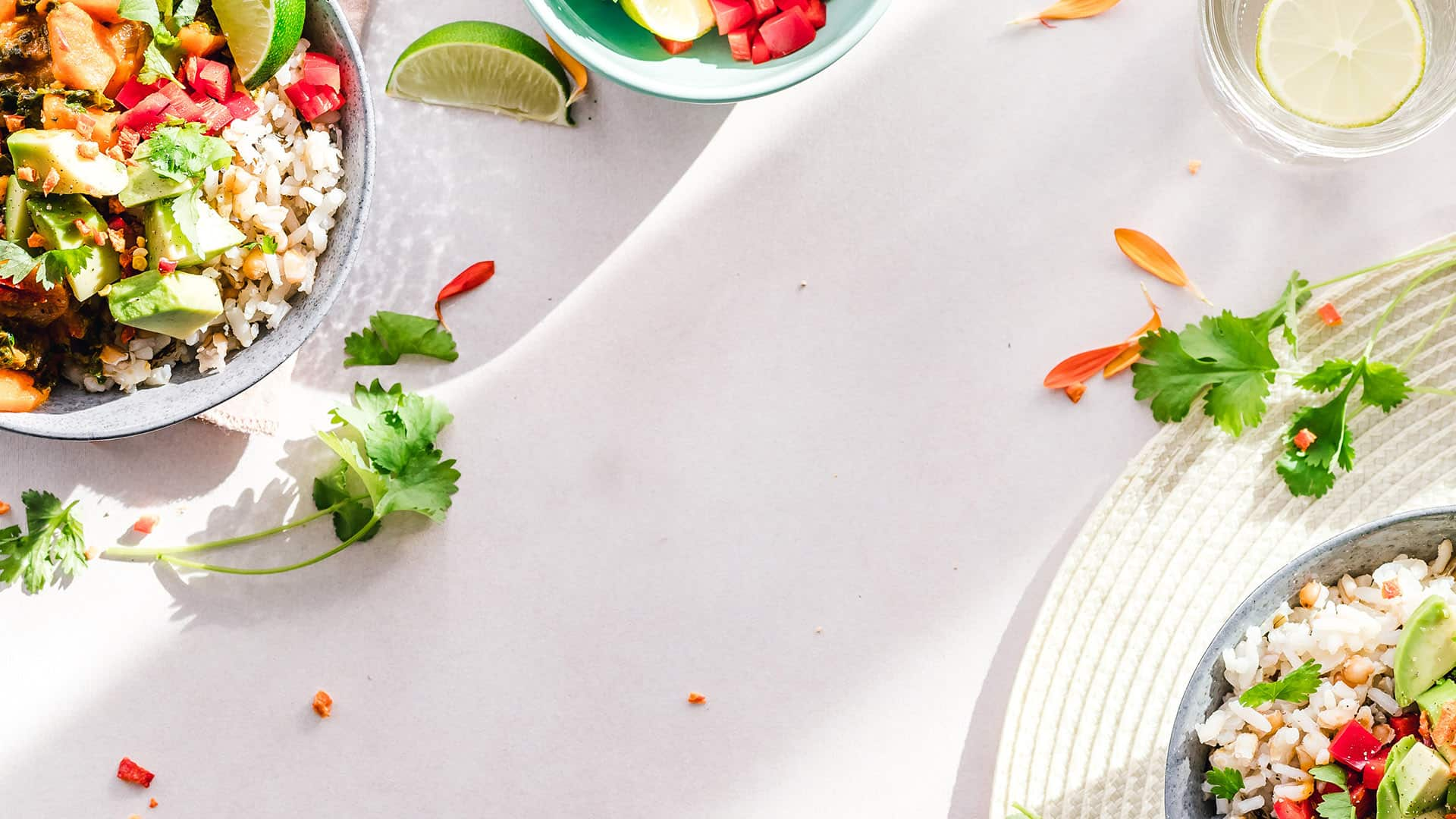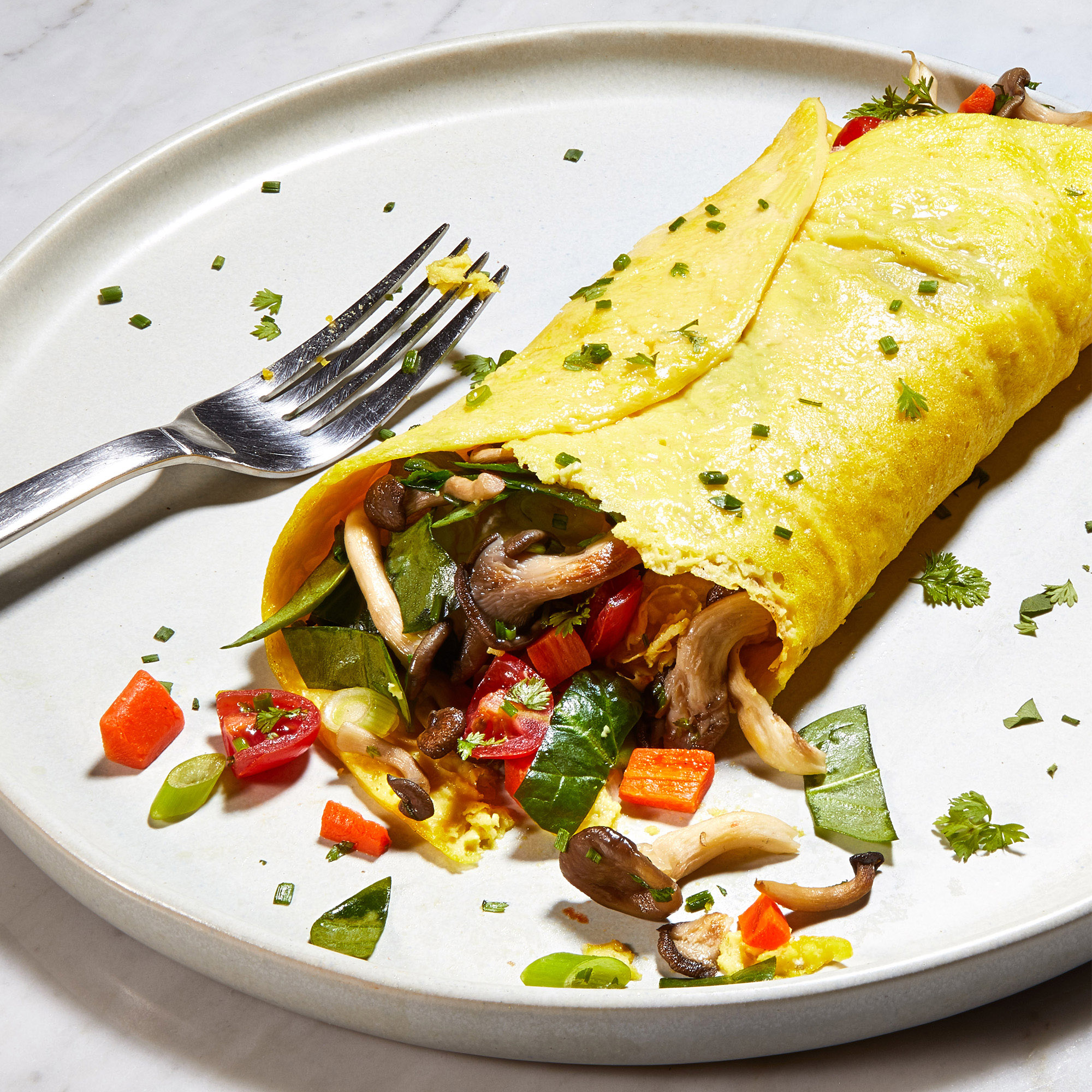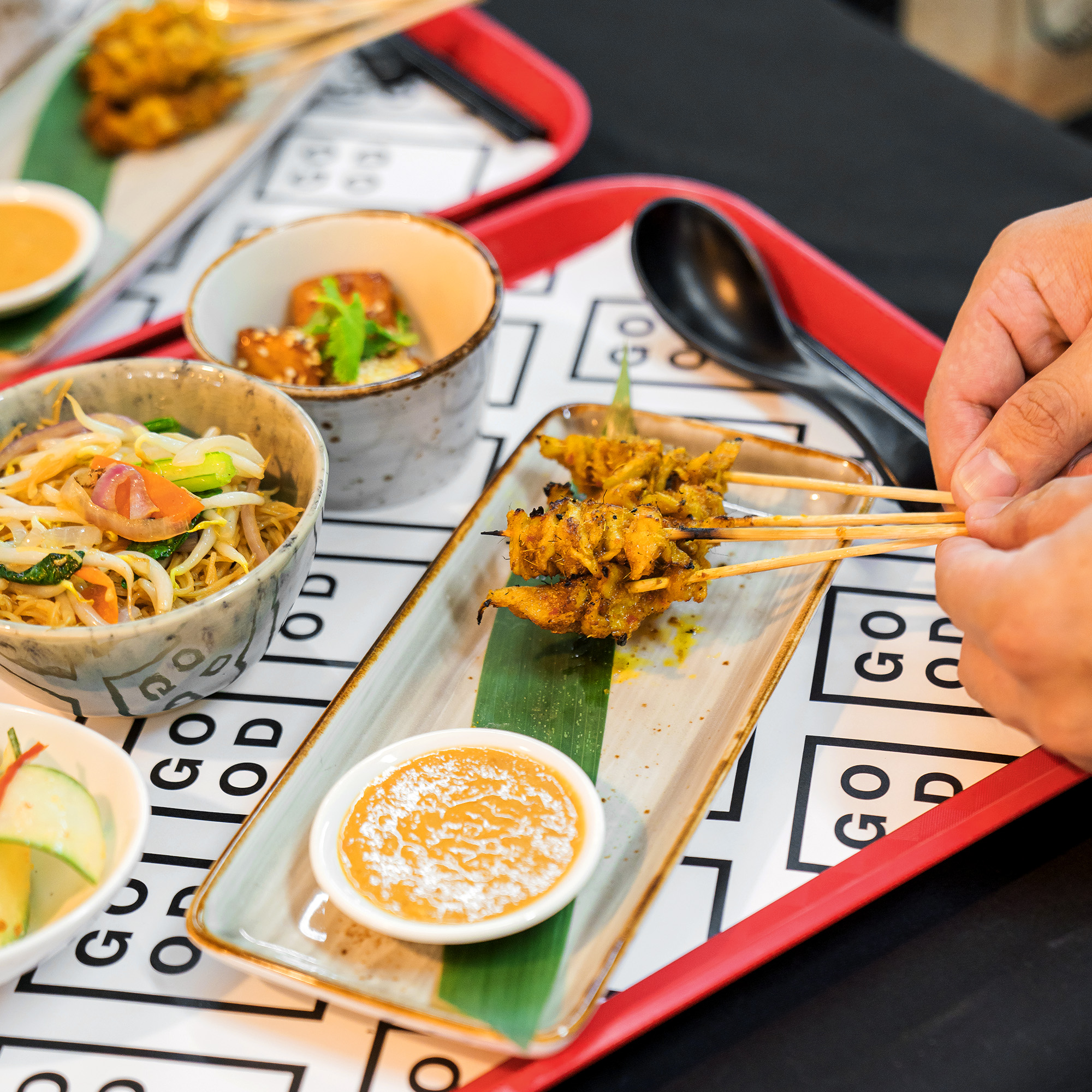

Protein Pioneer: Josh Tetrick
Named one of Fast Company’s ‘Most Creative People in Business’, Inc.’s ‘35 Under 35’, and Fortune’s ‘40 Under 40’. Most of all, though, Josh Tetrick is someone who just loves animals. As he tells Nick Bradley, he just wants to prove there is an alternative to conventional meat
As far as crazy afternoons for news in alt proteins go, the afternoon of 21 June 2023 is right up there among the craziest.
The announcement that GOOD Meat (the cultivated meat division of Eat Just), received that all-important final green tick – the ‘Grant of Inspection’ – from the USDA, had editorial teams all around the world bashing away on keyboards in a frenzy, desperate to break the news first. It meant the San Francisco-based firm, the parent company of which was founded in 2011, could finally sell its ‘cell-cultivated chicken’ to consumers in the USA. It wasn’t just a huge story for cultivated meat. It was a major development for the entire food industry.

But as momentous a story as that was, it wasn’t even a first for Josh Tetrick, Co-founder & CEO. He still holds the Singaporean clearance from 2 December 2020 (and subsequent tasting on 21 December) as “far and away” the biggest milestone for Eat Just/GOOD Meat. “Not just for us, but for the industry. And the most significant professional accomplishment that I’ve ever had. That, after +50 years talking about what it could look like to eat cultivated meat, there we were actually doing it!”
Singapore’s 1880 restaurant, known for its innovative menus and socially conscious patrons, served up GOOD Meat’s cultivated chicken in a trio of sample dishes: bao bun with crispy sesame chicken and spring onion; filo pastry with chicken and black bean puree; and a crispy maple waffle with chicken, spices and hot sauce. “A group of kids sat around a table at 1880 that night, and we launched cultivated meat globally for the first time,” Tetrick reflects still fondly.
At the time, there were probably only a few dozen companies experimenting with cultivated fish, beef and chicken. Just two years later, there were more than 150. Today, there are +200. But when the history books are eventually written, GOOD Meat will forever have its place in that very first chapter.
The back story
Years before, though, it was actually Tetrick’s “dear friend” and co-founder, Josh Balk, who was “instrumental” in opening Tetrick’s eyes to the “ethical aspects of our actions” – the stark reality lurking behind the consumption of the chicken, burgers, and pork chops that many of us eat on a daily basis. That behind each piece of meat we put in our mouths, there are countless animals.
Before eventually getting into food-tech, Tetrick went to law school. He even spent time in Africa, working for a children’s charity – an experience that left an indelible mark on him, leading him to wonder how the power of capitalism could be harnessed to address a significant, meaningful, and pressing global issue.
He returned from Africa to the USA, with the picture that Balk painted still lingering, and spent several months pondering his next steps, imagining how different our world might be if we could create genuine meat without the need to sacrifice a single animal or cut down a tree? Could we make better eggs than hens… with plants? He outlined a concept and grasped the chance when it arose to present his vision to Vinod Khosla, a co-founder of Sun Microsystems. Khosla took a chance. And the rest is history.
I genuinely believe that we can all find ways to enjoy foods like chicken and hamburgers without causing all this unnecessary suffering
“What probably drives me the most is that I don’t want to inflict harm onto animals,” says Tetrick, whose golden retriever, Ellie, nestles behind him. “I genuinely believe that we can all find ways to enjoy foods like chicken and hamburgers without causing all this unnecessary suffering. It’s this connection I have with animals more than anything.”
Meat, but not as we know it...
The crux of the matter for Tetrick lies in addressing the meat industry’s challenges. We currently see the slaughter of tens of billions of animals each year, while billions of people enjoy consuming the four most commonly consumed animal proteins – chicken, beef, pork, and lamb – as well as fish. “Do we ask them to eat beans instead, which by the way is a really good option? Do we ask them to eat plant-based foods instead – another really good option? Or would it be more effective to ask them to eat meat – real meat – just made in a better way?”

To realize his dream, Tetrick needed to figure out a way to cultivate meat, instead of slaughtering it. “More than seven years ago now, we decided that we should start a cultivated meat division – and that’s how GOOD Meat spun out of Eat Just. We talked with leading scientists around North America and the world about how we should go about it. How do you get the cell? How do you develop the cell line? How do you scale it up? Then, armed with a little bit of knowledge, we decided to began to hire people and actually started building a program that we can be really proud of.”
Tetrick admits that it was a bit of “serendipity” that the chicken cell line happened to work the best in the early days. “But it also turns out to be the most consumed animal protein in the world,” he says. “We’re working on beef and are planning to submit that before the end of the year. And pork and lamb eventually. We want to build an infrastructure that allows us to make all of these kinds of animal proteins.”
Moving onto the technology itself, Tetrick says the process of cultivating meat is pretty similar, regardless of the company. “There are some nuances in the kinds of bioreactors that people use. Some companies also integrate 3D printing, which we think is a really compelling technology. Ultimately, though, it all starts with a cell and you get that cell from a cell bank – a biopsy of an animal, a fresh piece of meat – then you identify nutrients to feed that cell,” he explains. “So, think amino acids, sugar, salt, and then you scale it up in a bioreactor where it’s doubling over the course of about three weeks. After that, we simply remove it from the bioreactor and convert it into a finished product.”
The challenges in production
Of course, the process is not as easy as Tetrick makes it sound. There are many obstacles for mass production still remain. Developing highly efficient cell lines that can be scaled is no mean feat. Larger bioreactors are required that provide the necessary nutrients, oxygen, and temperature control to support cell growth. These bioreactors must also be sterilizable and cost-effective. Scaffolds are essential for achieving texture, but scaling up scaffold production and integration into the cell culture process is still a tough nut to crack. Then, as production scales, automation becomes critical to reduce labor costs and ensure consistency. Automation is needed for cell seeding, media exchange, and bioreactor operation. Yet increasing production will lead to increased energy consumption, so energy-efficient processes and sourcing renewable energy is paramount. And that’s before you’ve even started considering regulations and the consumer acceptance issues!
But these are all challenges that can be solved in time and with investment. Even since Tetrick first presented those initial ideas to Khosla all those years ago, technology has moved on leaps and bounds, during which time the GOOD Meat team has achieved some notable breakthroughs in its research, particularly surrounding cell densities.
Cell density serves as a measure of how efficiently the meat can grow, or more precisely, how rapidly the cells can replicate. “Since our initial stages, we’ve managed to significantly enhance our cell density levels,” Tetrick says. “We’ve succeeded in reducing our media costs, a crucial aspect of our production process. We’ve also gained valuable insights into the design and engineering of bioreactors, enabling us to optimize these systems for the purpose of producing meat in a more cost-effective manner.”

Cell density, the cost of the feed, and the infrastructure (bioreactors) are the big drivers of cost in production. “We’re working on all three: how do we increase our cell densities north of 50? How do we reduce our media cost to the tens of cents per liter? How do we get into big vessels? Only when we – and other companies – get past those very significant hurdles will we find a path to be at parity or below the cost of conventional chicken, beef, pork or lamb. You have to nail all three. If you have one and not the other, you’re not going to succeed.”
A capital-intensive business
Scaling, Tetrick goes on to suggest, is actually the biggest threat to the industry taking off. “I don’t see it being the conventional meat industry or consumer adoption,” he says. “It is very challenging and very capital intensive to build these large-scale facilities. That’s something that we and other companies need to figure out or cultivated won’t become what we want it to be.”
Is he concerned about a supposed bioreactor bottleneck? “I’m not sure what the existing bioreactor capacity is globally, but a bioreactor is just a vessel made of steel with some complex components,” he responds. “Humans can build them. And if you build large-enough vessels – and enough of them – you can make tens of millions of pounds of meat. There’s nothing in the laws of physics that stops that. It’s just really expensive. So, companies like ours need to figure out a way to ensure they have access to capital to do it, or they need to figure out a more creative way to do it. Or both!
“Right now, we’re only able to produce meat at very small volumes, so only a single butcher’s shop in Singapore and a single restaurant run by Chef José Andrés in Washington, DC. But we’re moving to a process where we can make tens of millions of pounds. But that’s a very challenging technical, financial, and emotional pathway. But we’re giving it a go.”
Time to change
Technical hurdles aside, cell-cultivated meat is simply too big an opportunity to let pass us by. As Tetrick has alluded to already, it eliminates the need for raising and slaughtering animals. It can help address global food security. Being produced in controlled environments, it also reduces vulnerability to factors such as disease outbreaks or extreme weather events. Cultivated meat may even lower the risk of zoonotic diseases. It can allow for precise control over the composition and quality of the final product, enabling the production of specific meat types and flavors to cater to consumer preferences. And as it utilizes fewer resources such as water and feed, it is more resource-efficient and potentially less vulnerable to resource scarcity issues. A cultivated meat industry can also be designed with strict hygiene and quality control measures, reducing the risk of foodborne illnesses associated with traditional meat processing. And if you’re Chef José Andrés, the cultivation process allows for the creation of entirely new food products, potentially expanding culinary possibilities and food options.
We’re moving to a process where we can make tens of millions of pounds. But that’s a very challenging technical, financial, and emotional pathway
For most people, though, the biggest benefit is that cultivated meat has the potential to reduce the environmental footprint of meat production, a factor that doesn’t escape Tetrick. “We need to really understand what conventional meat is doing to our planet today,” he says. “About a third of the planet is dedicated just to planting soy and corn to feed the animals we eat. Conventional meat is responsible for more GHGs than all the transportation sources combined. So, what we want to do is cultivate a meat product that is less intensive in terms of its carbon output.”

Tetrick reports that early studies indicate cultivated meat is 70-80% less carbon intensive, uses less water, and is less land intensive. “But, ultimately, we have to measure this at scale – not in a model – because right now everything is measured,” he adds. “People put assumptions in a spreadsheet, then those assumptions are calculated, and a figure gets spewed out at the end for someone like me to provide answers. Ultimately, we have to look at the real data after the scale up. That being said, all things do point to this being a lot more efficient than the way we currently do it.”
Communicating the benefits
As we have seen in other alternative proteins, such as plant-based foods, pushback is likely. “There’s no avoiding that – you just have to accept it,” says a pragmatic Tetrick. “There’s no amount of progress that you can make that will eliminate that. It’s important that you have companies that are good at communicating clearly, about what they’re doing and why it matters. I think having industry groups together, such as AMPS, is also vital to provide a lobbying effort in Congress. I suspect that as these products start to get out there more and more, you will see a much broader marketing effort. For us at our stage, though, it doesn’t make sense to commit to national marketing campaigns when it’s only available in one restaurant. We’re still in the very, very early stages, but I think more proactive marketing campaigns – and the industry speaking with one voice – will help.”
Recalling that night at 1880 in Singapore, the culmination of a 50-year-old idea, how does Tetrick think things will play out by 2050, when the population crosses the 10 billion mark? “I think by then it will be broadly acknowledged that cultivated meat is either currently the world’s most consumed meat – or will obviously be the world’s most consumed meat,” he concludes. “I hope – more optimistically – we’ll be in a place where it already is, and that’ll be a better world.”
If you have any questions or would like to get in touch with us, please email info@futureofproteinproduction.com







